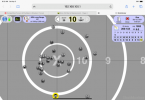Chris J Spierings
Well-Known Member
I have been trying to improve my reloading and accuracy a little bit every time I take on a new project. The latest is a 7mm Mag, worked with Pedersen Precision on a Rem action with a Muller works barrel. Anyway I put 20 rounds through it using Norma factory loads I wasn't impressed with the groups but they weren't horrible for still breaking in about 1" ish.
I have been looking around for new brass and found some ADG. It arrived and looked great, I thought what the heck lets see how consistent it is from a weight perspective. The spread across 50 cases was about 4 grains. For the the heck of it I weighed the once fired Norma brass after it had been deprimed, stainless wet tumbled. It was a little under 2 grains spread.
I was wondering what folks consider an acceptable weight range.
I have been looking around for new brass and found some ADG. It arrived and looked great, I thought what the heck lets see how consistent it is from a weight perspective. The spread across 50 cases was about 4 grains. For the the heck of it I weighed the once fired Norma brass after it had been deprimed, stainless wet tumbled. It was a little under 2 grains spread.
I was wondering what folks consider an acceptable weight range.

